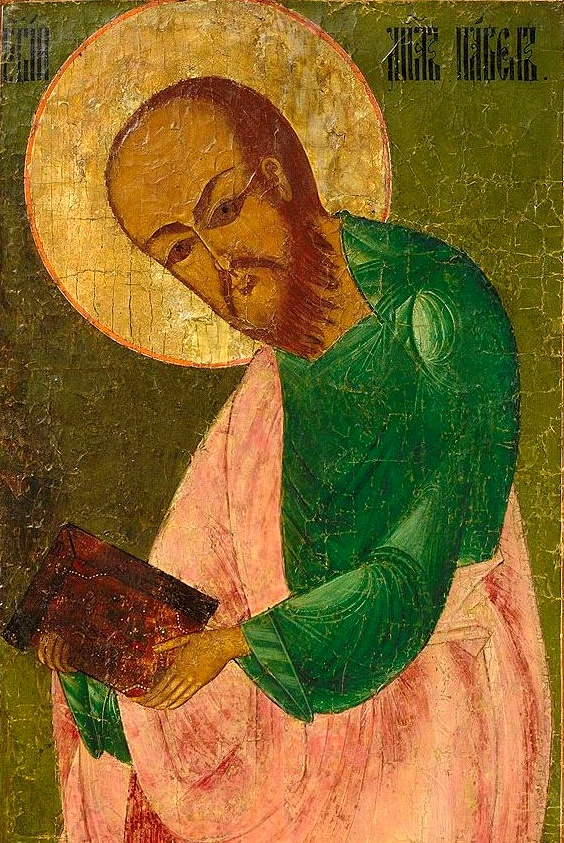Which Letters Did Paul Write?
Print version: PDF
If a letter says Paul wrote it, that means he is the author, right?
Not necessarily. Some of the letters were written by other people using Paul’s name.
Why Would a Letter Have Paul’s Name on It If He Did Not Write It?
The custom of writing in the name of someone held in high esteem was common in the ancient world. Philosophers’ students would write such works. Others in later generations would often write in the name of someone famous. Works appeared that named Aristotle as the author even as late as the Middle Ages. Aristotle lived in the fourth century BCE. People wrote in his name over a thousand years later.
Works that claim to be written by a famous author are called “pseudonymous” or “pseudepigraphical” writings. So many such works exist from the Greco-Roman world that many writings are referred to with the abbreviation “ps-” to indicate “pseudo-Aristotle” or “pseudo-Lucian,” for example. Watch for a post about the “Pseudepigrapha,” too. That’s a whole collection of writings attributed to famous people in Hebrew scriptures.
Some early Jesus followers wrote in Paul’s name using the form of the letters he wrote. The authors who wrote in Paul’s name did not have bad motives. As a new generation of Jesus followers confronted new issues, they were asking, “What would Paul say about this?” They answered that question with their own points of view. Their perspectives did not necessarily agree with what Paul said during his lifetime. Critical scholars read these writings with an awareness of the changing situations of later generations of Christ communities.
Which Letters Did Paul Write?
Critical scholars refer to the “seven undisputed letters” as the ones that are generally agreed to be Paul’s own. In the order they appear in most editions of the New Testament, they are Romans, First and Second Corinthians, Galatians, Philippians, First Thessalonians, and Philemon.
Watch for another post about dating Paul’s letters. Scholars propose different orders for the letters and argue for different dates for each of them. Some of the letters may also be composites of parts of letters composed at different times, too. However, these seven letters are the ones that Paul wrote before his death, probably in the mid-60s CE in the later part of Emperor Nero’s reign.
What about the Other Letters Attributed to Paul?
The other letters are sometimes referred to as the “Deutero-Pauline” letters. These other letters attributed to Paul include Second Thessalonians, Ephesians, and Colossians, and the three Pastoral Epistles. Hebrews is sometimes attributed to Paul as well, but this writing is not a letter and shows little similarity to Paul’s writings or thought. Scholars generally agree that he did not write it.
Some critical scholars argue that Paul himself may be the author of Second Thessalonians, Ephesians, or Colossians. Yet most see these letters as written after Paul’s death by authors who were members of the communities he founded. Scholars generally agree that the Pastoral Epistles were written at least a generation after Paul lived.
What Are the “Pastoral Epistles?”
Critical scholars generally agree that three of the letters written in Paul’s name are clearly later than the others, First and Second Timothy and Titus. Perspectives in these letters differ from views in the ones Paul wrote himself. Passages in these letters are often quoted to uphold particular views of family structures that subordinate women. The views in these letters are not more “biblical” than perspectives found in Paul’s own letters or in other biblical texts. Watch for additional posts about these passages and how they are used and misused.
Why Does It Matter Who Wrote These Letters?
For communities that recognize biblical writings as scripture and view Paul as an authority, the writings that he actually wrote can take priority. They view Paul’s own writings as more authoritative than the later letters. For critical scholars and others with varying views of the authority of the Bible and Paul, establishing Paul as the author of a letter is part of interpreting passages in the letter in context.
Additional explanations of Pauline authorship:
Cavan W. Concannon, “Paul and Authorship,” 2022, Bible Odyssey, Society of Biblical Literature.


